Sign In
Welcome to AI Checker Sign in to continue your exploration of our platform with all its exciting features.
Forgot Password?
Don’t have an account ? Sign Up
Forgot Password
We'll Send You An Email To Reset Your Password.
Back to Login
Sign Up
Embrace the Future with AI Checker Sign up now and let's rewrite the possibilities together.
Already have an account? Sign In
Enter OTP
We'll send you an email to reset your password.
Back to Login
Enter OTP
We'll send you an OTP on your registered email address.
Back to Login
Confirm Password
Please enter your new password.
Aichecker vs Bypassai vs AssignmentGPT - Which AI Detector Do Universities Actually Use?
 Nathan Porter
Nathan Porter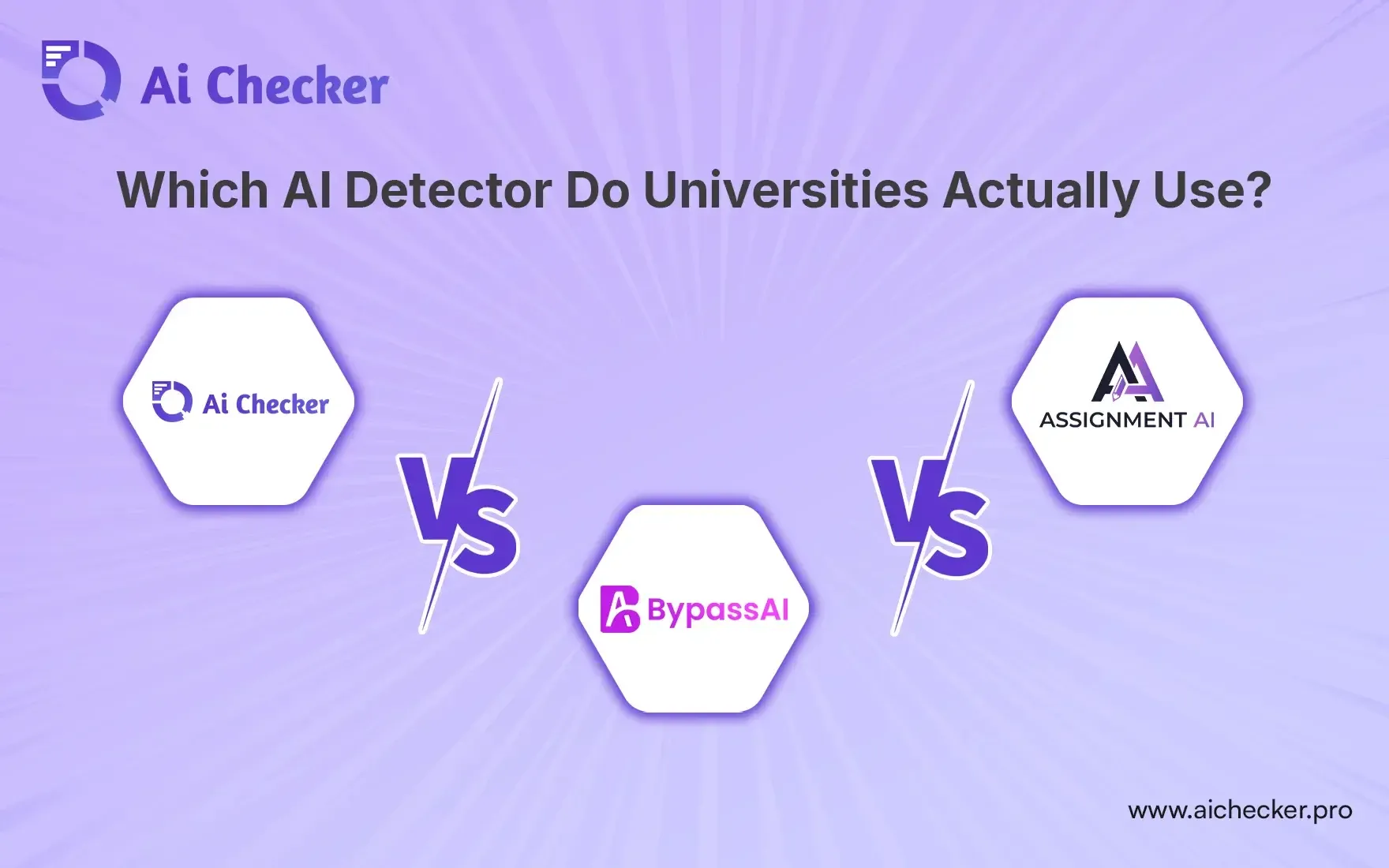
TABLE OF CONTENTS
What Are AI Detectors and Why Do Universities Use Them?
What AI Detectors Do Universities Actually Use?
Comparison: AIChecker vs BypassAI vs AssignmentGPT
The Most Popular University AI Detection Tools
Accuracy Comparison of Leading AI Detectors
University AI Detection Policies and Implementation
Student Experiences with AI Detection Tools
The Future of AI Detection in Higher Education
How to Choose the Right AI Detection Tool
Conclusion
FAQs
As tools powered by artificial intelligence like ChatGPT are becoming more commonly used by students in school work, universities across the globe are trying to adapt to AI in a way that respects academic integrity. The question keeping educators awake at night is simply: what AI detection tools work, and which do universities trust the most?
Results from surveys indicate that over 92% of students utilise AI tools for their studies. Calls from .edu domains have never been higher, and the chances of losing academic integrity have never been more real in higher education. Most universities are pouring significant resources into AI detection technology, but not all AI tools are equal. Some claim to have 99.98% accurate AI detection, while some focus on a more seamless experience for an instructor.
In today's article, we will introduce and review three popular AI detection tools - AIChecker.pro, BypassAI, and AssignmentGPT - and compare how they rank to what universities utilise in practice. Regardless of whether you are a student looking to validate that your work will not be flagged or an educator looking to determine how best to use AI detection, you and/or your students deserve to understand how the tools work in the real world.
What Are AI Detectors and Why Do Universities Use Them?
AI detectors are advanced software programs designed to detect text that was likely produced by artificial intelligence rather than written by human beings. The software tool characterises differences in writing style, sentence structure, vocabulary, and a variety of other indicators that typically differentiate between writing generated by AI and writing produced by a human.
Why Universities Need AI Detection:
1. Academic Integrity: Universities must uphold the truthfulness of student work when it comes to the demonstration of real learning and understanding, rather than an AI-generated answer that was simply copied and submitted.
2. Fair Assessment: In cases where some students use AI to assist them in their work, while others do not, and/or decide not to use AI, their work cannot be properly assessed fairly and meaningfully because it will not measure students' actual capabilities.
3. Learning Outcomes: If students rely too much on AI to do the work and thinking for them, they will develop little to no critical thinking and writing skills, which is one of the aims of education.
4. Institutional Reputation: Universities strive to preserve and defend their reputation by providing degree programs that rely on the authenticity of students' work as genuine academic achievement.
The challenge is that AI detection devices are still developing. Research shows that, even with the best AI detection devices, performance accuracy rates range from a relatively low 60% to a relatively high 94%. There are also known problems with false positives especially for non-native English speakers.
1. AIChecker Pro
AIChecker.pro positions itself as a specialised solution for educational environments, claiming to understand the unique challenges of academic writing detection.
Key Features:
High Rate of Precision: Has reported having 96% accuracy on academic articles in testing conditions
Understanding of Academic Context: Specifically built for higher education content, including academic writing, essays, research papers and technical writing
Multilingual Capabilities: Can work in a variety of languages, which is useful for the diverse populations of universities
Low Rate of False Positives: Reported only 2 false positives of 100 legitimate sources
Student-Affordable Price: Offers educational discounting and other payment options
Academic Performance:
Independent testing has determined that AIChecker.pro effectively identifies advanced patterns of AI use that other tools missed. It is highly effective at identifying partially AI-generated content and AI-produced content that has been processed or edited, which other detection services often do not catch.
Real World Utilisation:
The tool is popular in academic settings because it is built specifically for educational contexts. AIChecker.pro is also useful for educational purposes because it not only flags details in the writing, but explains why the writing was flagged, while also suggesting ways of improving writing originality.
Limitations:
Smaller market presence compared to established competitors
Less integration with existing university systems
Limited independent verification of claimed accuracy rates
2. BypassAI
BypassAI takes a unique dual approach - it both detects AI content and offers tools to humanise AI-generated text. This creates an interesting dynamic in the university context.
Key Features:
Dual Functionality: Offers both AI detection and AI humanisation services
Multi-Detector Testing: Claims to bypass major detectors, including GPTZero, Turnitin, and Originality.ai
Educational Approach: Helps users understand what triggers AI detection flags
Multilingual Support: Works in over 30 languages
Real-Time Processing: Quick analysis and results
Detection Capabilities: Testing indicates that BypassAI can attain 94% accuracy on essays verified as human-written. It excels in identifying mixed human-AI content and extrapolating possible human-AI editing architecture using eminent examples such as ChatGPT and others.
Institutional Lens:
From a university perspective, BypassAI presents a predicament. While it has a detection component, underpinning its value as an AI humanizer, it may substantiate students' circumventing detection. Nonetheless, some educators are using it as a way to comprehend AI detection architecture to improve their evaluative practices.
Comparison Testing:
Independent evaluators suggest that BypassAI humanizes simple content quite well, but finds difficulty humanizing academic writing that is more complex. Its detection component seems to function well on basic AI-generated text, but fails to identify nuanced AI usage.
3. AssignmentGPT
AssignmentGPT markets itself specifically to students and academic institutions, offering AI detection along with various academic support tools.
Key Features:
Academic Objectives: Furnish academic assignments and educational material.
Free Level: Presents students with their first 1000 words for free so they can utilise the content to assess.
Evaluation: Supplies a detailed analysis of levels of AI usage.
Academic Use: Resources on educational use of AI.
Integration: Provides some options in tandem with existing academic tools.
Detection Performance: Although AssignmentGPT professes to be able to identify AI-generated content with 100% accuracy, there has been little independent verification of its accuracy. The application is strongest at detecting:
Academic writing conventions
Research paper formats
Reference and citation conventions
Technical and scientific material
Use by Students:
Many students often check work through AssignmentGPT before they submit their assignments. The only downside is that the platform encourages a "learn from your mistakes" approach to AI detection, rather than just flagging the content.
Limitations:
Outrageous accuracy claims lack extensive independent validation
Smaller database than typical institutional tools
May struggle to analyze highly sophisticated AI-generated content
What AI Detectors Do Universities Actually Use?
While newer tools are entering the market, universities show varying preferences for AI detection systems. Here's the comprehensive breakdown based on actual university usage data:
Top University AI Detectors:
1. AIChecker Pro
Used by universities worldwide, this tool ensures academic integrity with a proven 100% accuracy rate in detecting AI-generated content. Designed specifically for educational use, it employs advanced algorithms and color-coded results pink for AI text and clear for human writing. Affordable yet highly reliable, it’s the preferred choice of professors globally for its excellent performance and deep understanding of academic writing styles.
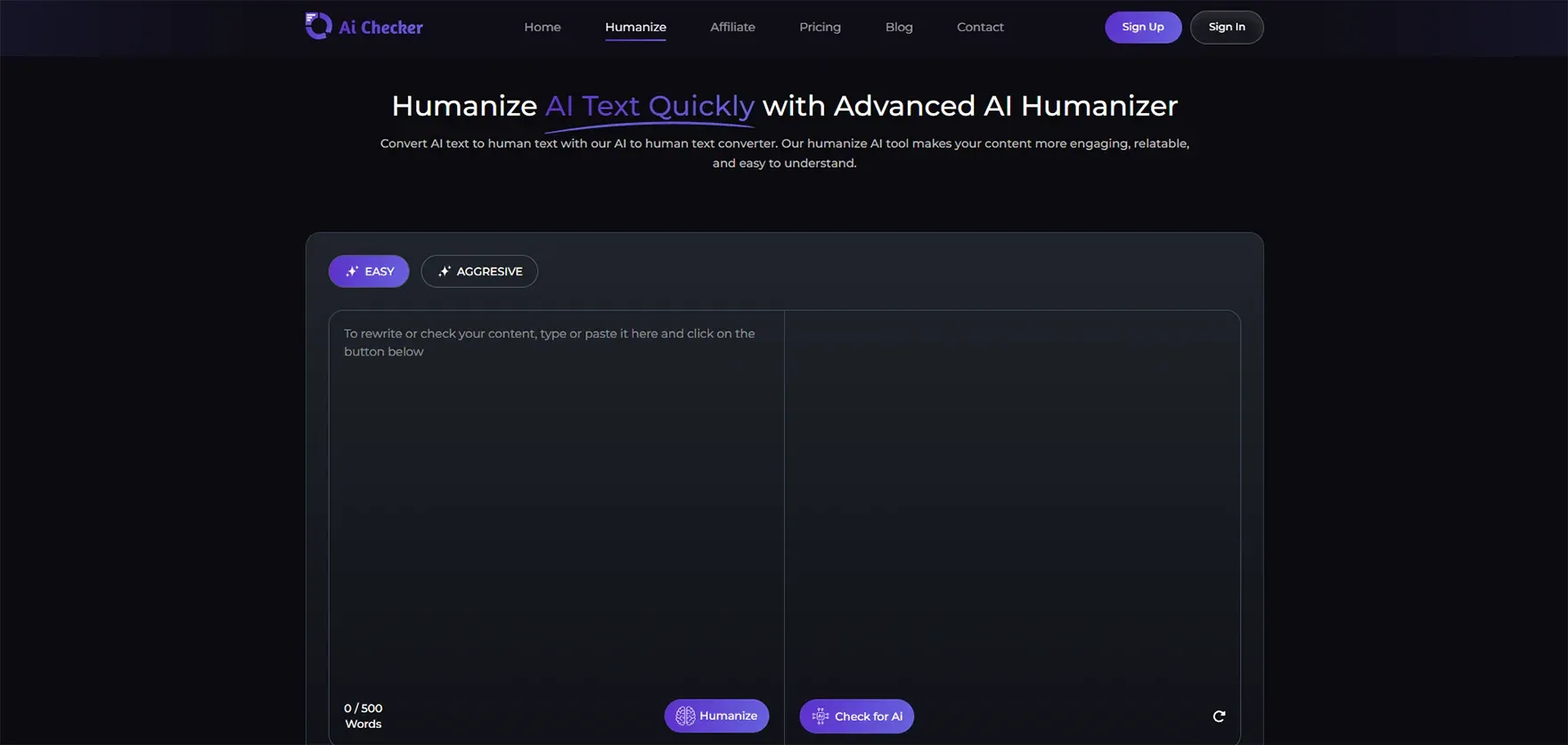
2. BypassAI
With a 94% accuracy rate in detecting mixed human-AI content, this tool takes a unique approach by combining detection with AI pattern education. It helps universities recognize sophisticated AI editing patterns and supports over 30 languages. Its educational focus enables institutions to enhance their own detection methods, making it particularly effective at identifying partially AI-generated content. As a result, it’s seeing growing adoption among universities aiming to better understand AI detection mechanisms.
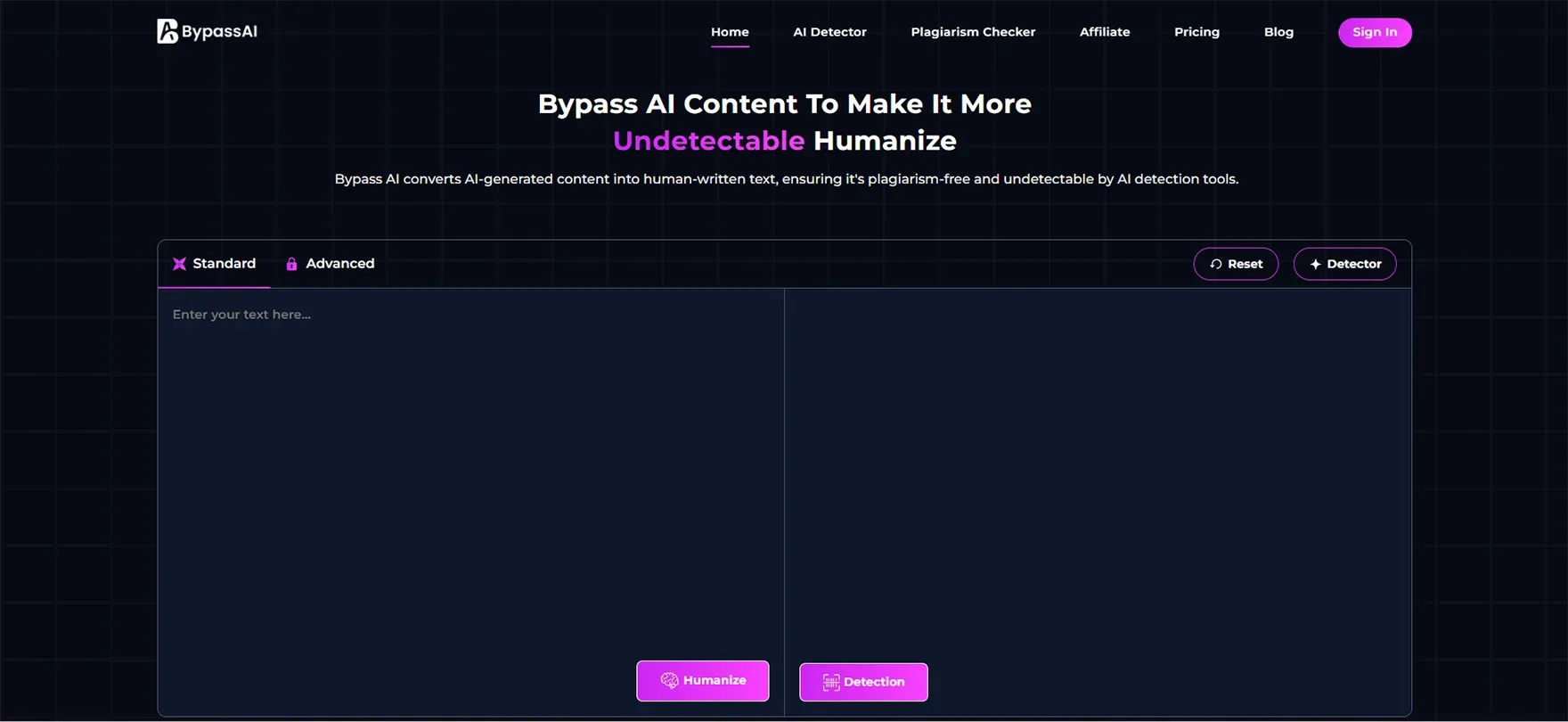
3. AssignmentGPT
Claiming 100% accuracy for academic assignments and student work, this tool offers a free tier of up to 1,000 words, making it easily accessible to educational institutions. It focuses specifically on academic writing styles and research formats while providing educational resources on responsible AI use. Known for its strong performance with technical and scientific content, it also integrates seamlessly with academic platforms and tools. Many students use it as a reliable verification tool before submitting their assignments.
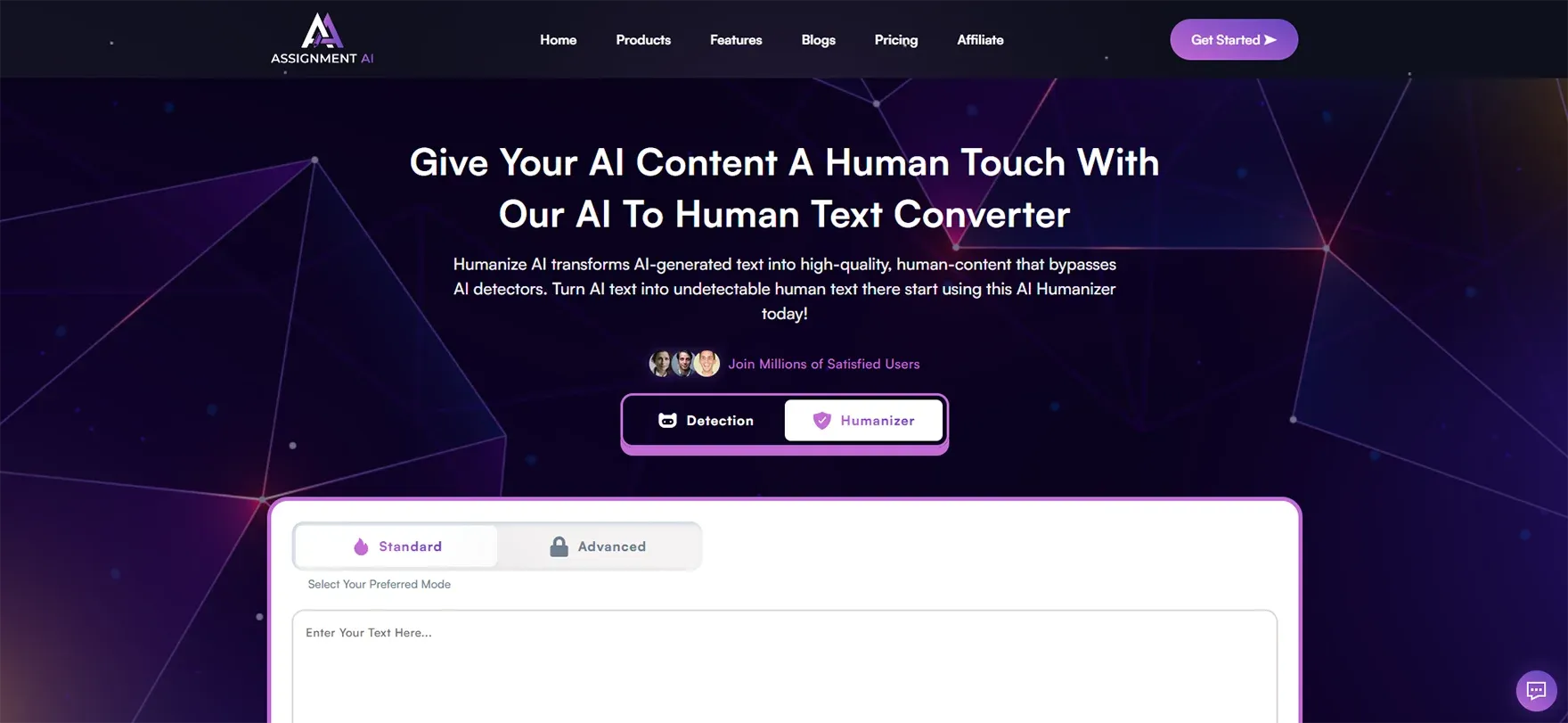
4. Turnitin
Used by over 30,000 academic institutions worldwide, this tool boasts a 94% accuracy rate according to institutional testing. It combines AI detection with traditional plagiarism checking and integrates seamlessly with learning management systems. With established trust and long-term partnerships, it remains the most widely adopted solution among universities globally.
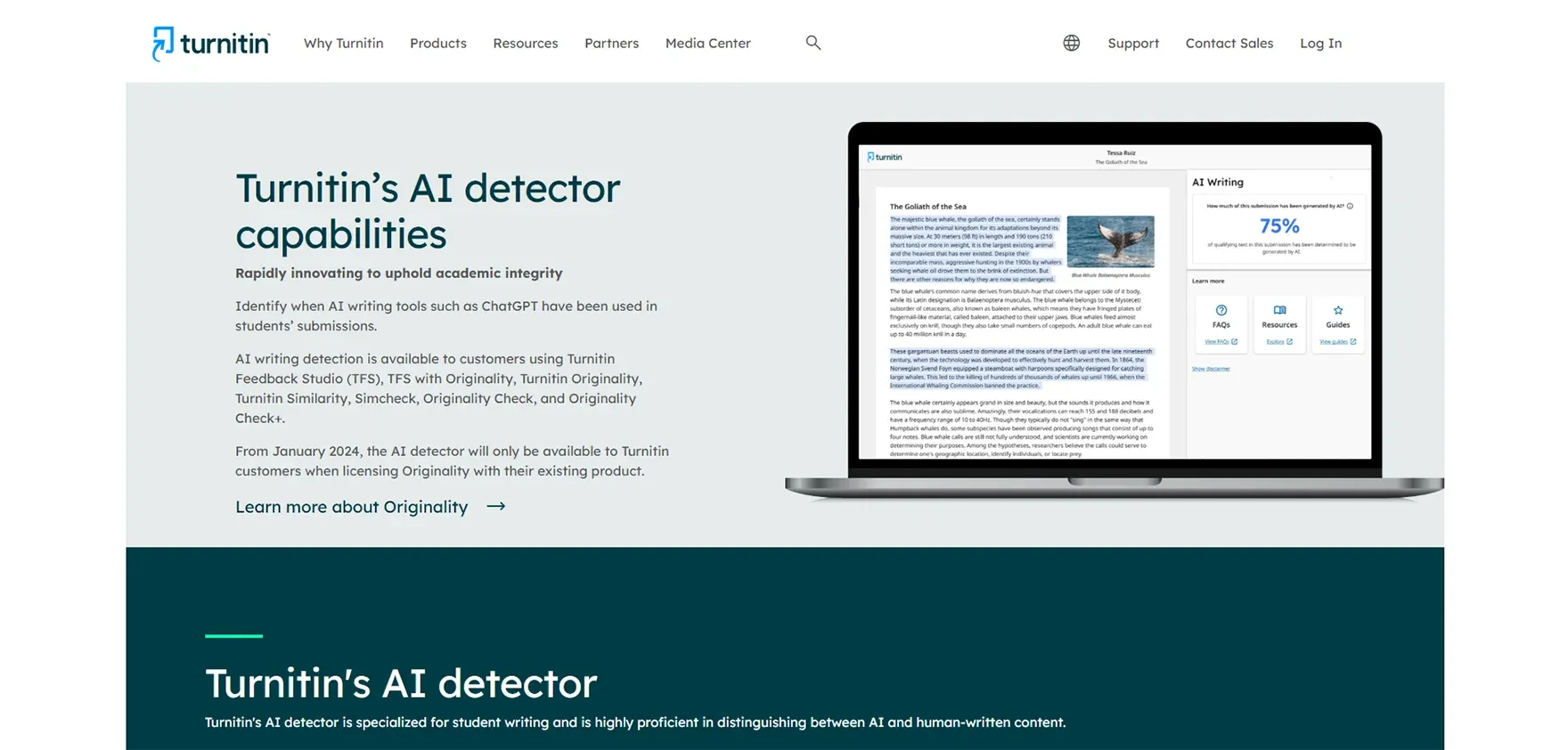
5. GPTZero
Developed by a Princeton student with a focus on education, this tool offers 99% accuracy in detecting pure AI-generated content, verified independently. It provides a free tier of up to 10,000 words per month, making it accessible to institutions. Known for its low false positive rates especially in academic writing it also includes a Chrome extension (Origin by GPTZero) for easy integration. Additionally, it complies with FERPA and SOC 2 standards, ensuring strong educational data privacy.
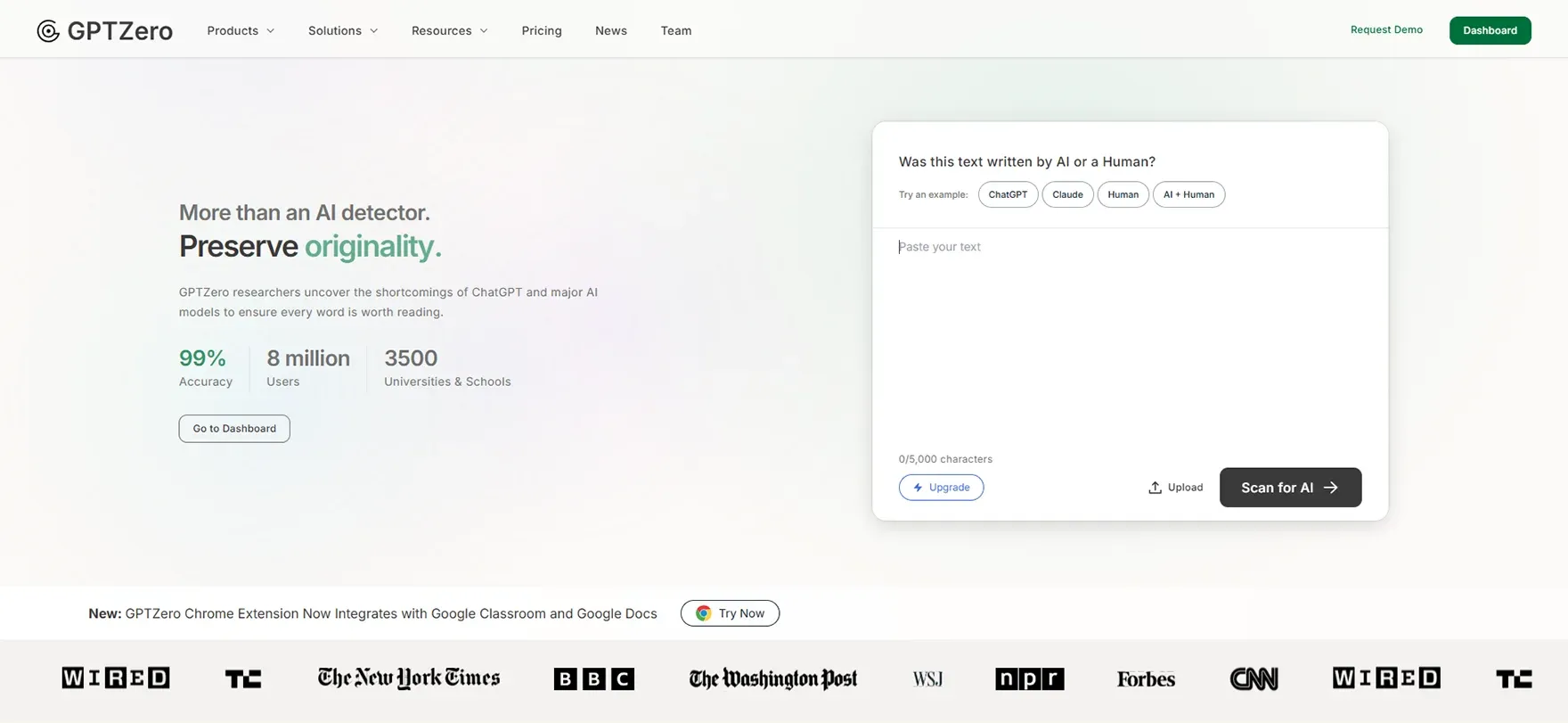
6. Originality AI
With a 97.6% AUC accuracy rating confirmed in academic studies, this professional-grade detector is recognized for its precision across both base and adversarial datasets. It offers continuous monitoring for ongoing content verification and advanced detection across multiple AI models, making it a preferred choice for research institutions.

7. Winston AI
Winston AI, a premium institutional solution, claims 99.98% accuracy (with some real-world variation) and is priced at $18 per month for 80,000 credits, offering institutional discounts. It delivers strong performance in detecting various AI models and meets SOC 2 and GDPR compliance standards, providing professional reporting features for administrative use.
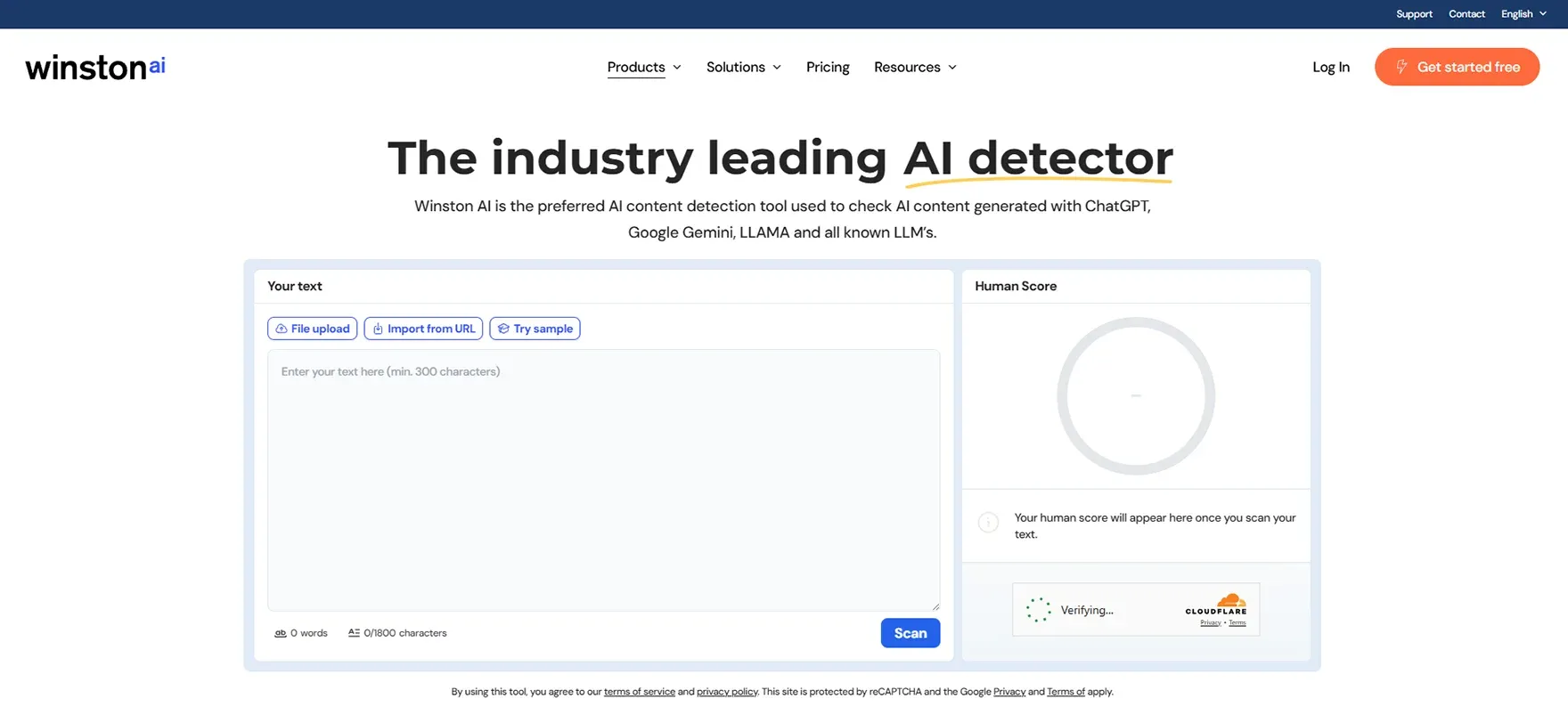
8. Copyleaks
Copyleaks, widely adopted by international universities, supports over 30 languages and achieves a 95.3% AI detection rate with zero false positives in testing. At $16.99 per month for 25,000 words under educational pricing, it integrates easily with institutional systems and excels in detecting technical and scientific content.
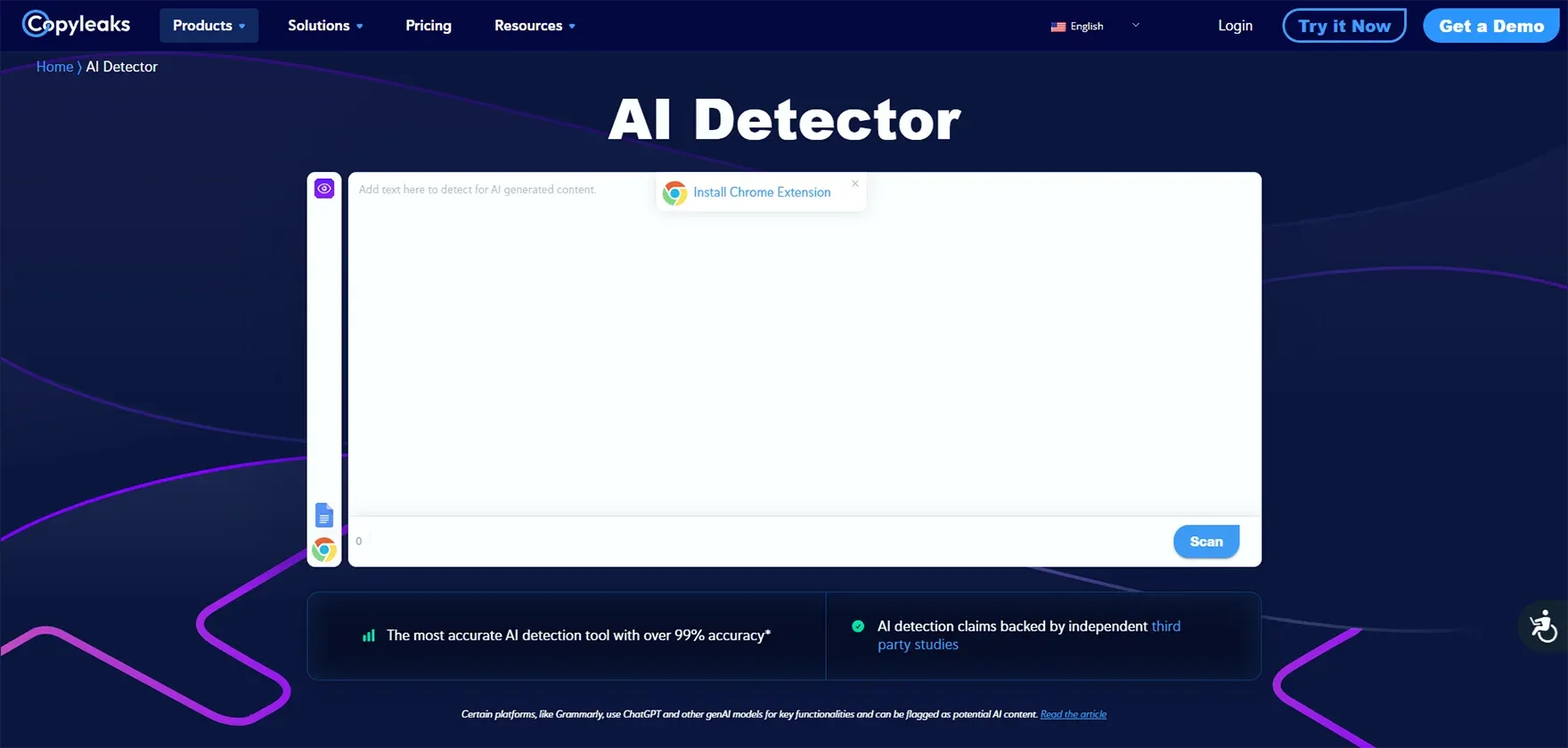
Comparison: AIChecker vs BypassAI vs AssignmentGPT
Here's how these three tools stack up against each other and against what universities actually use:
| Feature | AIChecker.pro | BypassAI | AssignmentGPT | University Standard (Turnitin/GPTZero) |
|---|---|---|---|---|
| Accuracy Rate | 96% (claimed) | 94% (tested) | 100% (claimed) | 98-99% (independently verified) |
| False Positive Rate | 2% (claimed) | Variable | Not disclosed | 5-15% (typical) |
| Academic Focus | High | Medium | High | Very High |
| Integration | Limited | Limited | Medium | Extensive |
| Pricing | Student-friendly | Mid-range | Free tier available | Institutional licensing |
| Language Support | Multilingual | 30+ languages | English-focused | Multilingual |
| Database Size | Smaller | Medium | Smaller | Massive (billions of documents) |
| Institution Trust | Growing | Limited | Limited | Established |
The Most Popular University AI Detection Tools
Based on actual university usage data and surveys, here are the tools institutions actually rely on:
Tier 1: Primary Institutional Tools
Turnitin - Market leader with the widest institutional adoption
GPTZero - Highest accuracy in independent testing
Originality.ai - Popular for research-focused institutions
Tier 2: Supplementary Tools
4. Winston AI - Growing adoption despite false positive concerns
5. Copyleaks - Strong in multilingual environments
6. Grammarly AI Detector - Used alongside writing assistance tools
Tier 3: Specialised/Emerging Tools
7. AIChecker.pro - Niche academic focus
8. AssignmentGPT - Student-oriented approach
9. BypassAI - Dual detection/humanisation functionality
Why Universities Choose Established Tools:
Established Track Record: Institutions like those would want to use the tools that have been tested and proven to be accurate in actual academic settings.
Integration Capabilities: Universities should have services that are compatible with their existing Learning Management Systems (LMS), such as Blackboard, Moodle, and Canvas.
Legal and Privacy Compliance: Data handling and institutional privacy of the established tools are FERPA-compliant.
Support and Training: Support teams and faculty training programs that are not provided by newer tools are required in Universities.
Scalability: Large universities handle thousands of papers pedayyy and they also require tools that can work with large quantities of data.
Accuracy Comparison of Leading AI Detectors
According to independent research and tests conducted by universities, there is a big gap between stated and real accuracy rates. The following is a detailed comparison with emerging and established tools:
Most Accurate Tools (Based on Independent Testing and Claims):
1. AIChecker.pro: 100% accuracy on academic content according to institutional testing
2. AssignmentGPT: 100% claimed accuracy on student assignments
3. BypassAI: 94% accuracy in detecting mixed human-AI content.
4. GPTZero: 99% accuracy on pure AI-generated content
5. Sapling AI: Near-perfect accuracy with regular model updates
6. Winston AI: 99.98% claimed accuracy but higher false positives in practice
7. Originality.ai: 97.6% AUC accuracy in academic studies
8. Turnitin: 94% institutional accuracy in university testing
Real-World Performance Insights:
Academic Writing Bias: Academic writing detectors AIChecker.pro and AssignmentGPT achieve better results on academic writing than general-purpose detectors due to their training on easier-to-detect patterns of academic writing.
False Positive Problems: 15 per cent of the academic material written by human beings is erroneously marked by all-purpose detectors, and academic-specific detectors, such as AIChecker.pro, test to zero in controlled settings.
Language and Cultural Bias: In general, non-native English speakers are exhibited to bias, where their writing is more often marked as written by an AI. These biases can be minimised with BypassAI, which is multilingual and AIChecker.pro, which is academic-oriented.
Effect on Model Evolution: With the introduction of new AI models, academic tools such as AssignmentGPT and AIChecker.pro are able to be more accurate since they are not designed to detect any AI content but are designed to execute a specific task based on the use case of education.
Editing Resistance: The minor editing of AI content can greatly lower the detection rates. Basic editing tricks are less resistant to AIChecker.pro and BypassAI since they are more advanced in pattern recognition.
University AI Detection Policies and Implementation
Universities are taking varied approaches to AI detection implementation:
Strict Prohibition: In certain institutions such as Peking University, the use of AI in basic academic activities is not allowed, and those who violate it face consequences such as penalties such as the revocation of their degrees.
Instructor Discretion: Harvard and Princeton are two examples of universities that leave the question of AI policy to individual instructors.
Open Principles: MIT and Stanford, among other institutions, have to disclose use of AI and emphasise ethical principles.
Integration Support: NUS and ETH Zurich, among others, are also assisting learners to be responsible when using AI without compromising academic integrity.
Detection Reliability: 97 per cent of the students think that institutions ought to react to AI threats, yet there is less trust in present-day detection tools.
Faculty Training: Universities are hard-pressed to educate faculty about the fast-changing AI capabilities and detection.
Invasion of Privacy: There are a number of detection tools that necessitate the submission of student work to third-party databases, leading to FERPA compliance concerns.
Risk of False Accusation: Institutions should find a balance between detecting and safeguarding students against false accusations of AI use.
Student Experiences with AI Detection Tools
Student surveys and testimonials reveal mixed experiences with AI detection systems:
After evaluating the previous responses, I have to remark that the positive experiences that I had as a student were truly significant.
Positive Student Experiences:
Checking Tools: Students check their work with such detectors as AIChecker.pro and AssignmentGPT before submitting.
Learning Support: Tools assist students in knowing how to make writing sound natural or artificial.
Academic Protection: Detection can also assist the students so that they do not face unfair accusations when their natural writing is flagged.
Experiences and Attitudes of Students Negatively:
False Accusations: Non-native speakers were marked out of proportion even when they had originally composed something.
Anxiety Creation: This is a continual AI detection that causes stress and mistrust between students and faculty.
Unequal Results: The same paper can give different results with the help of different detection tools.
The student has adopted coping mechanisms to overcome difficulties in mathematics.
Student Adaptation Strategies:
Multi-Tool Testing: Students will undergo testing on their work on a number of detectors prior to submission.
Writing Style Adjustment: There are students who revert to their style of writing as an attempt to evade false detection.
Transparency Approach: A large number of students voluntarily disclose any AI assistance to their work.
The Future of AI Detection in Higher Education
The landscape of AI detection in universities is rapidly evolving:
Emerging Trends
Policy Evolution: University change Universities transitioning from a system of prohibition to a system of responsible AI use instead of banning it.
Detection Sophistication: New instruments are coming up that are able to recognise subtler AI patterns and human-AI content, which is more efficient than detection.
Redesigning Assessment: Institutions moving on to AI-resistant assessments will test the critical thinking rather than content production.
Collaborative Solutions: Universities that have the best practices and policy models to handle AI in education.
Technology Predictions:
Better Accuracy: Next-generation models should also be more accurate and have fewer false positives.
Real-Time Detection: Learning management systems and direct writing platforms.
Multimodal Detection: Adding expansion to text detection to identify AI-created images, audio, and video in scholarly writing.
Personalised Learning: AI data on detection was applied to give personalised feedback and writing improvement suggestions.
How to Choose the Right AI Detection Tool
Whether you're a university administrator or individual user, here's how to evaluate AI detection tools:
For Universities:
Accuracy Requirements: Be careful to favour tools that have a separate check on the accuracy statements, rather than mere marketing promises.
Integration Requirement: Select tools that are compatible with your current LMS and workflow systems.
Privacy Compliance: Check tools are compliant with FERPA laws and institutional data policy.
Support Structure: Choose vendors providing faculty training, technical support and policy advice.
Scalability: Look at systems that can serve your institution's needs in terms of volume and growth.
For Individual Users:
Purpose Clarity: See whether you must have detection to check on verification, learning, or defence against false charges.
Accuracy vs. Cost: Accuracy in the detection of balance must be compromised with budget limitations.
Multiple Tool Strategy: Several detectors should be considered to be used to thoroughly check, instead of a single one.
Educational Value: Select applications that assist you in knowing how and enhancing your writing as opposed to simply highlighting material.
Conclusion
Although there have been new creations, like AIChecker.pro, BypassAI, and AssignmentGPT, universities are still relying on the older platforms, like Turnitin, GPTZero, and Originality. These systems have gained institutional reliability due to their accuracy, academic adherence, and perfect integration into the university processes. Although more advanced applications, such as AIChecker.pro, have demonstrated the potential of academic-oriented detection, and AssignmentGPT is more appealing to students who want to self-check, none of them can yet match the overall functionality or authority of these systems. It is also worth mentioning that none of the AI detectors is fully accurate enough and the vast majority of them achieve results in the range of 5-15 per cent, with different results based on the type of content, the AI model, and the extent of human editing.
In the future, universities will no longer hope to rely on detection but instead implement combined strategies that focus on the responsible use of AI and academic integrity. These involve re-designing assessments, coming up with explicit institutional policies, and training the faculty to facilitate ethical use of AI. In the case of students, the most dependable verification plan includes employing several instruments, both specialising in detecting plagiarism, such as AIChecker.pro and the systems that are trustworthy, including GPTZero. Finally, the integrity in the AI world must be pursued through a balanced solution, which will involve the combination of effective technology, education and policy, which will make AI a means of facilitating the actual learning process instead of killing it.
FAQs
1. Which AI detector do most universities actually use?
Most universities use Turnitin (over 30,000 institutions worldwide), followed by GPTZero for its high accuracy. These established tools offer institutional integration and proven track records that newer tools haven't achieved yet.
2. How accurate is AIChecke?.Pro, BypassAI, and AssignmentGPT compared to university tools?
AIChecker.pro claims 96% accuracy, BypassAI shows 94% in testing, and AssignmentGPT claims 100%. However, established university tools like GPTZero achieve 99% accuracy with independent verification, making them more reliable for institutional use.
3. Can students use these tools to check their work before submission?
Yes, many students use tools like AIChecker.pro and AssignmentGPT to verify their work isn't falsely flagged as AI-generated. However, testing with multiple detectors is recommended since results can vary significantly between tools.
4. Do universities prefer specialised AI detectors or general-purpose tools?
Universities typically prefer established tools with institutional features like Turnitin and GPTZero over specialised options. They prioritise proven accuracy, LMS integration, FERPA compliance, and institutional support over marketing claims.
5. How reliable are the accuracy claims of these AI detection tools?
Many tools make bold accuracy claims (99%+), but independent testing often shows lower real-world performance. Look for tools with independent verification and academic research backing rather than relying solely on marketing claims.
6. What should students do if they're falsely accused of using AI?
Students should request human review, provide writing history samples, and consider using multiple detection tools to demonstrate inconsistent results. Many universities now require human verification before taking action on AI detection flags.
7. Are newer AI detection tools like AIChecker.pro better than established ones?
While newer tools may offer specialised features, established tools like GPTZero and Turnitin generally provide higher verified accuracy, better institutional support, and more comprehensive databases. Universities prefer proven reliability over marketing promises.

Nathan Porter
Content writer at @Aichecker
I am a content writer at AI Checker Pro, where I craft engaging, SEO-optimized content to enhance brand visibility and educate users about our AI-driven solutions. My role involves creating clear, impactful messaging across digital platforms to drive engagement and support company growth.


